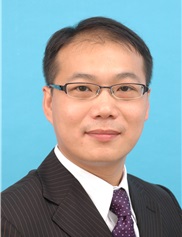Before & AfterPhotos
 View Photo Gallery
View Photo Gallery
Sam Schaefer said nothing has stopped him in the three and half years since his leg amputation. He decided to go forward with the amputation almost a decade after he injured his foot in the Air Force during a training exercise.
Four-time cancer survivor Cinde Dolphin's struggle to heal sparked an idea. Watch how she designed an innovative solution to help patients heal and discover the impact it had on women in Africa. Dolphin shows us how cancer can test your mettle but also create new opportunities.
Consummate performer Aniela McGuinness kept her spirits high through breast cancer and reconstructive surgery. Her second cancer diagnosis proved even more challenging. Guided by the compassionate care of ASPS Member Surgeon Shashi Kusuma, MD, she kept her infectious sense of humor.
Skateboarding enthusiast Brittany Castaneda had to both physically and mentally heal after a drunk driver ran her over while crossing the street. Plastic surgeon Ariel Ourian, MD, transformed both her injuries and self-confidence with reconstructive surgery.
Dana Donofree was diagnosed with breast cancer a day before her 28th birthday, turning her world upside down. The diagnosis led to bilateral mastectomies, breast reconstruction and chemotherapy, which left her grappling with a new reality and a body that seemed unfamiliar to her shortly before her wedding.
Chronic pain was the biggest battle for soldier Sam Schaefer after he sustained an injury to his left foot during a training exercise. Schaefer was shuffled between doctors and specialists for a decade with no relief and few answers until he met John Felder, MD, a plastic and reconstructive surgeon.
For most, a cancer diagnosis is a life-altering event that happens once. For Cinde Dolphin, it became an all too familiar adversary, striking not once but multiple times. It wasn't just her resilience in the face of repeated cancer battles that was remarkable. Dolphin also designed an innovative solution for patients because of her challenges with postsurgical drains.
Harrison "Gray" Canales had a typical childhood but an atypical life. His early years were interspersed with numerous surgeries because he was born with a severe bilateral congenital deformity. The face staring back at you today is a testament to his journey, resilience, personal growth and the remarkable medical achievements that shaped his life.
It was a journey to becoming a doctor with a lot of stops and detours for Laurence Busse, MD, MBA. This trip began like a lot of other travels for the 19-year-old Tulane University political economy major, with a car ride on a night out with friends in New Orleans in 1990.
Erin Crea decided to venture out of her house alone and go to the mall. But something went wrong before her plan came to fruition. The last thing she remembered was leaving her driveway – and instead of shopping at the mall, she woke up in an emergency room.
Onyinye Udebuani survived a car accident in 2018 that severely disfigured her face, changing not only her looks but the course of her life. She was a passenger in the collision that killed three others.
Shamira Reeves was a toddler in Africa when her tiny torso and arms were burned by boiling water that her stepmother poured on her, webbing her arms to her body and crippling her.
NFL star Alex Smith's life changed in a matter of seconds in 2018. One moment the quarterback was running toward the 40-yard line, and the next he was steamrolled to the ground by the opposing team's J.J. Watt and Kareem Jackson. The tackle shattered the bones in Smith's lower leg – and potentially his dream of ever playing football again.
Plastic surgeon Paul Cederna, MD, has always been interested in solving some of the most challenging issues in reconstructive surgery. He co-leads the Neuromuscular Lab at the University of Michigan, which focuses on developing futuristic technology that uses an amputee's nerves to control a prosthetic limb.
It's hard to imagine what it would be like to go from being a 19-year-old college football player who could do practically anything he wanted physically, to being unable to move. This became Marc Buoniconti's harsh reality after he collided with another player, dislocated his neck and sustained a spinal cord injury.
When Blake Haxton reached his senior year of high school, the rowing season had just started when he noticed soreness in his lower right leg. The next morning was an ordinary Monday, but the pain in his leg was anything but.
Fractional CO2 laser therapy is a promising treatment for patients with burn scars. This noninvasive procedure uses laser energy to break down scar tissue, revealing softer and smoother skin beneath.
Today's young patients have benefited from innovations in craniofacial surgery that began in the late 1960s. Advances in three-dimensional imaging, for example, have helped plastic surgeons like Jesse Goldstein, MD, see how to improve the shape and function of a pediatric patient's head and face.
Plastic surgery has advanced considerably since its origins as a treatment for injured soldiers. From rudimentary surgeries during World War I, it has now grown to full limb transplants for troops who have lost their arms, restoring function and giving them a chance at living a more normal life.



